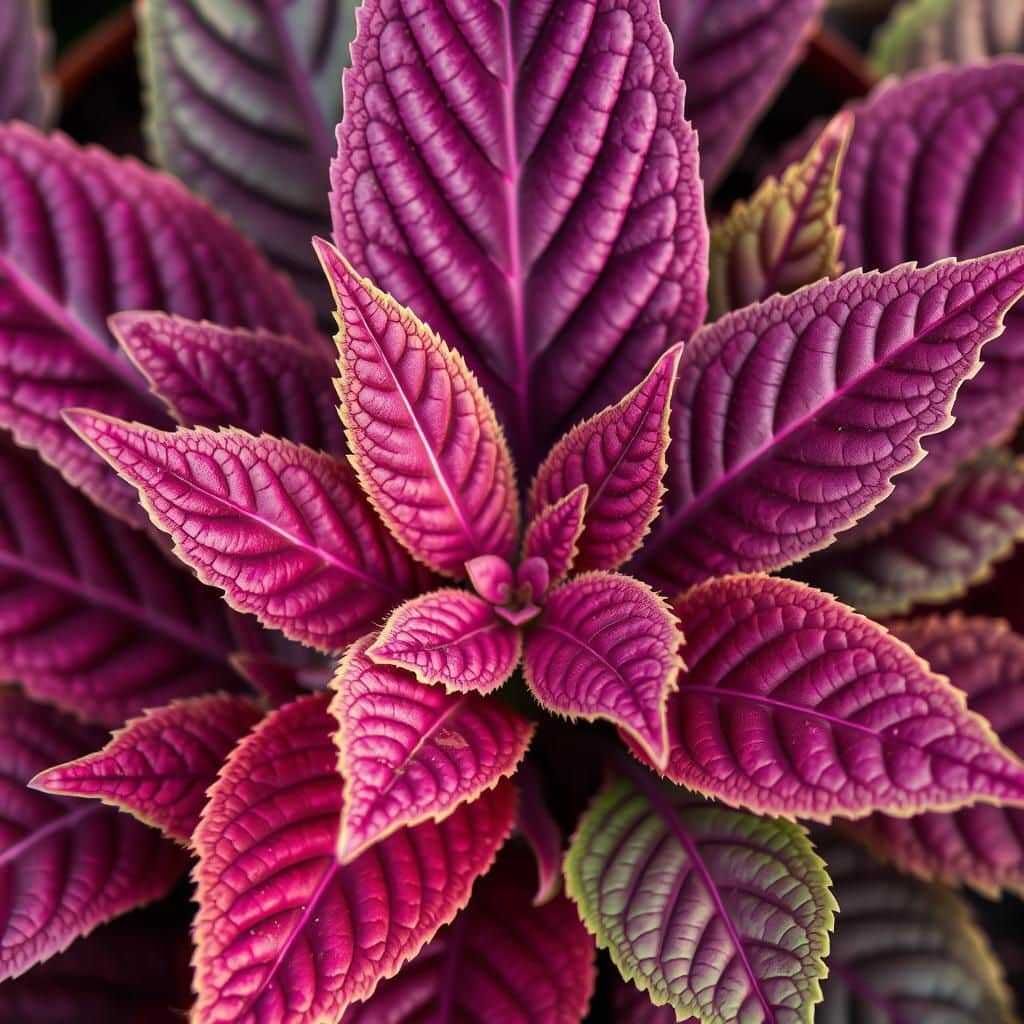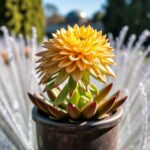Discover Stunning Purple Leaved Plants Australia: Your Guide to Unique Foliage Choices

Australia is home to a diverse array of flora, but few features as striking as plants with purple leaves. These unique foliage choices not only add a splash of color to gardens and landscapes but also enhance visual interest with their distinctive hues and textures. In this guide, we will explore stunning purple-leaved plants found across Australia, showcasing their vibrant beauty and discussing how to best incorporate them into your gardening projects. Whether you are an experienced gardener or just starting, these captivating plants will inspire you to elevate your outdoor spaces with their bold and dramatic presence.
Purple Leaved Plants in Australia
In Australia, the variety of purple leaved plants reflects the country’s unique climate and ecology. Among these, species such as the Heuchera, commonly known as coral bells, and Astrophytum, known for its stunning purplish cacti, add a vibrant touch to gardens and landscapes. The cultivation of these plants is primarily focused in regions with moderate climates, allowing them to thrive and showcase their distinctive foliage. These plants not only enhance aesthetic appeal but also contribute to biodiversity, serving as habitat for various wildlife. Understanding the growth requirements and ecological significance of each species is crucial for gardeners and environmentalists alike.
Types of Purple Leaved Plants
There is a diverse range of purple leaved plants found in Australia, including ornamentals and native species. The Maple tree, particularly the 'Crimson King', is a popular choice due to its striking deep purple leaves in the spring and summer. Other notable examples include the Japanese Blood Grass and various ornamental shrubs such as the Purple Smoke Bush, which showcase vibrant purple hues that change with the seasons, creating visually stunning displays in gardens and parks across the continent.
Growing Conditions
Many purple leaved plants thrive in well-drained soil and require full sun to partial shade to achieve optimal color saturation. In Australia, these plants are often planted in rich, organic soils, which provide necessary nutrients while avoiding waterlogging. Proper irrigation is crucial, especially during the hot summers, as many species are sensitive to drought conditions. Understanding each plant's specific requirements helps gardeners create ideal habitats, ensuring vibrant growth and longevity.
Benefits of Purple Leaved Plants
Incorporating purple leaved plants into gardens offers numerous benefits, both aesthetic and ecological. They can enhance visual interest by contrasting with green foliage and blooming flowers, creating a layered and dynamic garden space. Additionally, many of these plants are beneficial for local pollinators, providing nectar and habitat, which supports the overall health of the ecosystem. Their unique colors also contribute to the mental well-being of gardeners and visitors, as studies suggest that colorful environments can uplift mood and promote relaxation.
Maintenance and Care
Proper maintenance and care are essential for cultivating healthy purple leaved plants. Regular pruning helps maintain shape and encourages fuller growth, while appropriate fertilization can enhance leaf color and promote blooming. It's important to monitor for pests and diseases, as some purple leaved varieties can be more susceptible than others. Mulching can control weeds and help retain soil moisture, reducing the need for frequent watering. Understanding these care tips can lead to successful growing experiences for gardeners at any skill level.
Where to Buy Purple Leaved Plants
Purchasing purple leaved plants in Australia can be done through various channels, including local nurseries, garden centers, and online retailers. Many nurseries specialize in native Australian plants, offering a curated selection of unique purple varieties. Additionally, online platforms often provide a broader assortment, allowing gardeners to explore and learn about different species before purchasing. Reading customer reviews and checking for locally adapted plants helps ensure that buyers choose healthy specimens that will thrive in their specific climate conditions.
| Plant Name | Common Name | Optimal Conditions | Benefits |
|---|---|---|---|
| Heuchera | Coral Bells | Partial shade, well-drained soil | Attractive foliage, drought-tolerant |
| Astrophytum | Purple Cacti | Full sun, sandy soil | Unique appearance, minimal water needs |
| Acer platanoides | Crimson King Maple | Full sun, moist soil | Beautiful fall color, shade provider |
| Pennisetum | Purple Fountain Grass | Full sun, well-draining soil | Ornamental appeal, attracts wildlife |
| Cotinus coggygria | Purple Smoke Bush | Full sun, adaptable soil | Striking foliage, air purification |
What is the Australian plant with purple leaves?

The Australian plant known for its purple leaves is the Coral Tree, specifically the species Erythrina crista-galli. This plant is indigenous to Australia and is notable for its vibrant foliage and striking flowers. The leaves can range in shades of purple to deep burgundy, making it a popular choice for ornamental gardening. The Coral Tree not only provides aesthetic value but also attracts a variety of wildlife, including birds and insects.
Characteristics of the Coral Tree
The Coral Tree is characterized by its distinctive features, which include:
- Leaf Structure: The leaves are trifoliate, meaning they consist of three leaflets, and can exhibit a unique purple hue.
- Flowers: Bright red flowers appear in clusters, further enhancing the visual appeal of the plant.
- Growth Habit: It typically grows as a medium to large tree, reaching up to 15 meters in height.
Habitat and Distribution
The Coral Tree is commonly found in a variety of habitats across Australia, thriving in:
- Coastal Areas: Preferring sandy soils, it is often found near coastal regions.
- Woodlands: The tree flourishes in open woodlands and can adapt to a range of soil types.
- Urban Settings: Frequently planted in gardens and parks due to its striking appearance.
Cultural Significance
In Australian culture, the Coral Tree carries significant meaning:
- Symbol of Strength: Often seen as a symbol of resilience due to its robust growth and ability to thrive in various conditions.
- Indigenous Usage: Indigenous Australians used different parts of the tree for medicinal purposes.
- Ornamental Value: Regularly used in landscape design for its aesthetic appeal and ability to attract wildlife.
Care and Cultivation
Caring for the Coral Tree involves several key practices:
See also:
- Watering: While tolerant of drought, it benefits from occasional watering, especially in dry spells.
- Soil Type: Prefers well-drained soils but can adapt to poor quality soils, making it relatively low maintenance.
- Pruning: Regular pruning helps maintain shape and encourages new growth.
Wildlife Interaction
The Coral Tree plays a crucial role in its ecosystem by:
- Attracting Birds: The bright flowers are particularly appealing to nectar-feeding birds.
- Supporting Insects: It serves as a habitat for various insects, contributing to biodiversity.
- Providing Shelter: The foliage creates a sheltered environment for smaller wildlife.
What is the name of the plant with purple leaves?
:strip_icc()/Tradescantia-Pallida-Purple-Heart-FCvQWHhyaBJABocPbOCSfc-7e007cda875445d0be37c410a6eb69f7.jpg)
The plant commonly known for its purple leaves is the Purple Shamrock, scientifically named Oxalis triangularis. This plant is adored for its unique, attractive foliage that displays a stunning deep purple color, making it a popular choice for indoor gardens and decorative displays. The purple shamrock not only features vibrant leaves but also produces small white or pink flowers, adding to its aesthetic charm. The leaves have a distinctive shape, often resembling a butterfly, which further enhances its appeal.
Characteristics of Purple Shamrock
The Purple Shamrock is notable for its unique features that set it apart from other houseplants.
- Foliage: The deep purple leaves that contrast beautifully with the white or pink flowers.
- Size: Typically, this plant can grow up to 12 inches in height and can spread around 12 to 15 inches wide.
- Growth Habit: It is a perennial plant, meaning it can thrive for several years if properly cared for.
Care Requirements for Purple Shamrock
Caring for the Purple Shamrock requires some specific conditions to ensure optimal growth.
- Light: Prefers bright, indirect light but can tolerate partial shade.
- Watering: Needs to be watered regularly, allowing the top inch of soil to dry out between waterings.
- Soil: Thrives in well-draining potting soil to prevent root rot.
Common Issues with Purple Shamrock
Like any plant, the Purple Shamrock can face several challenges that might affect its health and appearance.
- Pests: Mealybugs and aphids can be common pests that affect the health of the plant.
- Overwatering: This can lead to root rot, a significant issue for purple shamrocks.
- Light Stress: Too much direct sunlight can scorch the leaves, while inadequate light can cause them to lose their vibrant color.
Uses of Purple Shamrock
The Purple Shamrock serves various purposes that enhance both aesthetics and indoor environment.
- Decorative Appeal: It is popular in home decor and adds a splash of color to indoor spaces.
- Air Purification: Like many houseplants, it can help purify the air within homes.
- Symbolism: Often associated with good luck, it is sometimes given as a gift during special occasions.
Propagation of Purple Shamrock
Propagation is an exciting aspect of growing the Purple Shamrock, allowing enthusiasts to expand their collection.
- Division: The plant can be propagated by dividing the rhizomes, which can be done during the growing season.
- Bulbs: They can also be propagated by planting bulbs, which should be placed in well-draining soil.
- Seeds: Although less common, it is possible to propagate from seeds, though germination can be slow.
What is the purple invasive plant in Australia?
The purple invasive plant commonly identified in Australia is the Mimosa pigra, also known as Giant Sensitive Plant. This species is a member of the Fabaceae family and poses a significant threat to local ecosystems. Originally introduced for erosion control and stabilization, it has become highly invasive in various regions across Northern Australia.
Characteristics of Mimosa Pigra
Mimosa pigra is a perennial shrub that can grow up to 3 meters tall. Its leaves are composed of numerous small leaflets, giving it a feathery appearance. The most striking feature of this plant is its bright purple fluffy flowers, which can grow in clusters and attract pollinators. Its ability to thrive in disturbed soils has enabled the plant to spread rapidly.
- Height and Growth: Typically reaches heights of 1-3 meters.
- Flowering: Exhibits vibrant purple flowers that bloom in clusters.
- Leaf Structure: Features a feathery appearance with multiple small leaflets.
Environmental Impact
The invasion of Mimosa pigra can lead to significant environmental degradation. It outcompetes native flora for resources such as sunlight, water, and nutrients, ultimately reducing biodiversity. Moreover, this plant can alter habitats and slow the natural flow of water in ecosystems, affecting both plant and animal populations within the area.
- Habitat Alteration: Alters habitats by outcompeting native species.
- Biodiversity Loss: Contributes to a decline in local biodiversity.
- Water Flow Disruption: Slows down natural water flow in ecosystems.
Control and Management Strategies
Managing the spread of Mimosa pigra requires a combination of mechanical, chemical, and biological control methods. Mechanical removal can include cutting and digging out the plant, while chemical treatments often involve herbicides. Biological controls may introduce natural predators or competitors to help keep its growth in check.
See also:
- Mechanical Removal: Involves physically cutting or uprooting the plant.
- Chemical Treatments: Utilizes herbicides to kill the plant and prevent regrowth.
- Biological Control: Introduces natural enemies to control its spread.
Geographic Distribution in Australia
Mimosa pigra is predominantly found in regions of Northern Australia, particularly in areas like the Top End of the Northern Territory. It thrives in wetlands, floodplains, and along riverbanks, making it a common sight in these environments. Its adaptability to various soil types further enhances its potential for spread.
- Northern Territory: Predominantly found in the Top End region.
- Wetlands: Thrives in wetlands and floodplains.
- Soil Adaptability: Capable of surviving in various soil types.
Consequences for Agriculture
The proliferation of Mimosa pigra can have dire effects on agricultural sectors as well. Its aggressive growth can encroach on arable land, reducing available space for crops and pasture. This encroachment can lead to a decline in agricultural productivity, impacting both farmers' livelihoods and food supplies.
- Encroachment on Arable Land: Reduces crop and pasture space.
- Decline in Productivity: Harms agricultural efficiency.
- Economic Impact: Affects farmers' livelihoods and local economies.
What native plant has purple flowers in Australia?

The native plant known for having purple flowers in Australia is the Hardenbergia violacea, commonly referred to as the purple coral pea. This climbing plant is celebrated for its vibrant purple flowers, which bloom during the late winter to early spring months. The flowers are not only visually appealing but also attract various pollinators, including bees and butterflies, playing a crucial role in the ecosystem.
Botanical Characteristics
The Hardenbergia violacea is a perennial vine that can grow up to 3 meters in length. It has distinctive features:
- Leaves: The leaves are lance-shaped, glossy, and dark green, providing a beautiful contrast to the purple flowers.
- Flowers: The plant produces clusters of pea-like flowers that can range in color from deep violet to light lavender.
- Fruit: After flowering, it produces flat, hairy pods that contain seeds, contributing to its reproductive cycle.
Growing Conditions
The Hardenbergia violacea thrives in a variety of conditions throughout Australia. Its growing requirements include:
- Soil: Prefers well-drained soil but can adapt to poorer soils.
- Sunlight: Enjoys full sun to partial shade, making it versatile for different garden settings.
- Watering: Drought-tolerant once established, it requires minimal watering except in extreme dry periods.
Cultural Significance
This plant holds cultural importance in Australia, particularly among Indigenous communities, which recognize its uses:
- Food Source: Some Indigenous peoples consume the seeds after proper preparation.
- Medicinal Uses: Historically, parts of the plant have been utilized in traditional medicine.
- Symbolism: The vibrant flowers symbolize resilience and beauty, often incorporated into local art and culture.
Ecological Benefits
The Hardenbergia violacea contributes significantly to its ecosystem by:
- Habitat: Provides a habitat for various pollinators and birds, enriching local biodiversity.
- Soil Improvement: Helps prevent soil erosion due to its deep-rooting system.
- Attracting Wildlife: The flowers’ nectar attracts essential insects, supporting local ecosystems.
Landscape Use
Due to its aesthetic appeal, the Hardenbergia violacea is commonly used in landscaping projects:
- Coverage: Ideal for trellises, fences, and arbors, providing beautiful coverage and shade.
- Ground Cover: Can be used as ground cover to suppress weeds and prevent erosion.
- Mixed Planting: Often paired with other native plants to create diverse, low-maintenance gardens.
Questions from Our Readers
What are some popular purple-leaved plants found in Australia?
Many gardeners in Australia appreciate the unique beauty of purple-leaved plants such as the Persian Shield (Strobilanthes dyerianus) and Japanese Maple (Acer palmatum). These plants not only add striking color to gardens but also thrive well in various Australian climates.
How do I care for purple-leaved plants in Australia?
Caring for purple-leaved plants involves providing them with the right soil, light, and water conditions. Most of these plants prefer well-draining soil and partial shade, so it's essential to ensure they are not exposed to harsh afternoon sunlight, particularly in hotter regions.
Are purple-leaved plants suitable for Australian gardens?
Yes, many purple-leaved plants are indeed suitable for Australian gardens, provided you choose species that are adaptable to your local climate. Planting these vibrant species can enhance your landscape and invite birds and butterflies, adding life to your garden.
Can purple-leaved plants be grown indoors in Australia?
Certainly! Many purple-leaved plants can be grown indoors in Australia, especially varieties like the Tradescantia and Coleus. With adequate indoor light and humidity, these plants can thrive and bring a splash of color to your living spaces.
See also:

If you want to read more articles like Discover Stunning Purple Leaved Plants Australia: Your Guide to Unique Foliage Choices, we recommend you check out our Landscaping category.
Leave a Reply
Related Articles